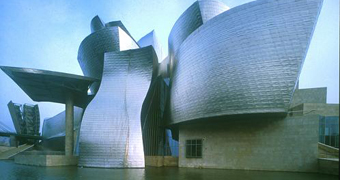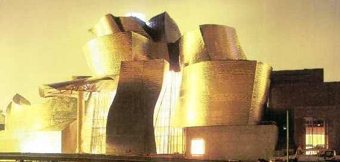

| Tension Collection | | Gem Settings | | Wedding Rings | | Wedding Inlaid Rings | | Murano Jewelry | | Accessories | |  |
|
|
About TitaniumHistory Titanium does not occur in its free, pure, metal form in nature. It was discovered in 1791 in its oxide form by an Englishman, William Gregor, and later rediscovered as only a component of the oxide and dubbed "Titanium" by the German Heinrich Klaproth. This Titan remained dormant until the 1920s when its extraction from its common oxide form was refined. Common awareness of this metal and its use took place only with its introduction as the material of choice for cold-war armaments and space race material. Starting in the 1950s Titanium became an essential raw material in the war-industrial complex. This choice was based on this metal's extraordinary characteristics: it is extremely strong (3 times stronger than steel) yet much (42%) lighter, it is chemically inert in all weather (and body) temperatures and conditions, and is a slow heat conductor. As a result, it was, and still is, used in the production of missiles, submarines, light weaponry, satellites, spy planes, and even the Concord airplane. Availability Although it is the fourth most common metal after aluminum, iron, and magnesium, and the ninth most abundant element on earth, its extraction as a pure metal has proven to be extremely difficult. An expensive metal in the fifties, it has more recently become somewhat more readily available due to disarmament efforts by the superpowers. Noticeable civil use started shaping in Japan by the 1970s where it was used in glass framing in the construction of skyscrapers (due to its low thermal expansion rate matching that of glass).  The Coming Out Only after the removal of the shroud of secrecy surrounding its use in the military industrial complex, and with the availing of more of the industry's output, enabled by the decline in consumption due to the shrinking cold war heavy industries, civil uses became a reality and prices affordable. A milestone in the element's stepping into fame and prestige took place as recently as 1997 with the inauguration of an architectural marvel-- the Guggenheim Museum in Bilbao, Spain (Frank Ghery, architect), all clad in.. Titanium! In fact, the Olympic torch of the 1997 Olympic Games in Nagano, Japan was lined with Titanium... |
 The new (1997), titanium clad Guggenheim museum in Bilbao Spain under sunset/sunrise light conditions Coming into Vogue Its scarcity in the 50s, 60s, 70s and 80s, its extraordinary durability, its different, metallic look and feel, and the Bilbao project...all pointed in the direction of growing demand for this material and of it becoming a winning material for specialty design. Indeed, titanium uses in luxury items from watches, to golf-clubs, tennis rackets, cameras, designer furniture and jewelry followed each other, continuously breaking new grounds and opening new frontiers for the new noble metal. Dubbed yesterday as the "metal of the future", the age of Titanium has dawned. The special "Titanium cachet" has been created. Titanium Visa and Master-Card are about to be released... it is a new icon of uniqueness & difference. A fashion statement. An attitude in itself. Titanium: A Design Element Titanium, a designers dream come true... and a metalsmith's dread or...passion! Titanium's amazing strength, resilience, relative lightness, biological and chemical inertness (it does not interact easily with other elements and substances, it is corrosion free and resists most acids and other corrosive materials) makes it ideal for designers of everything from cutlery to artificial joints, Ferrari hubcaps, eyeglass frames, mountain-bikes, hunting knives, and jewelry. In most cases, jewelry items are hand crafted or finished after machining from a solid titanium slab since melting, welding, or casting titanium all involve challenges stemming from Titanium's high interactivity at very high (e.g., melting) temperatures. What renders titanium so desirable is also the cause of much toil, chagrin and 'trouble'...The hard, labor-intensive cutting and shaping process explains the scarcity of Titanium jewelry manufacturers and a price tag commensurable with that of 'precious' metal jewelry. To work with it-- you must love it. An important property of Titanium (and more so its higher quality alloys) is its strength and unique springiness. Titanium's lower-than steel "Modulus of Elasticity" (it is half that of steel's) coupled with very high Tensile and Yield Strength means that its resistance to change is higher than steel's, and is exercised over shorter allowable room for movement by the metal: a Titanium spring of the same performance and resistance power will be shorter than the one made of steel, and, it will develop metal fatigue or fractions at a lower rate than steel. Car manufacturers are now studying the use of Titanium and new Titanium alloys in prestige car-model shocks. Read more... |
| Tension Collection | | Gem Settings | | Wedding Rings | | Wedding Inlaid Rings | | Murano Jewelry | | Accessories | |  |
| . |
|
Order|
Order Tracking|
Newsroom|
Warranties|
Testimonials|
Friendly Sites|
Titanium|
Diamonds|
Rough Diamonds| Inuit Diamonds ® | | Designer Maria da Costa Rings| Jewellers | About Us| Contact Us| Titania Gemstone| Obama Memorabilia | Links& Trivia| | Resources |Blog: Unique Wedding Ideas| Wedding Ring Set | Unveil Our Secret New Metal| | Kaleido Ti™| Home| Sitemap| Blog| |
| . |
| © 1997-2010 Absolute Titanium Designs® and Maria da Costa™. Copyright covers all images, text, layout and grahpic design, and some of the ring-designs -- please inquire. Some ring designs are patent (design) pending--please inquire. |
| Legal Notice: Unauthorized reproduction, copying, transmittal, manufacturing, promotion, sale, or any form of commercial use of any of our proprietary and protected material and exclusive designs constitute a violation of the laws governing intellectual properties and their protection, are strictly forbidden and will be prosecuted at the discretion of Absolute Titanium and/or its affiliates. |